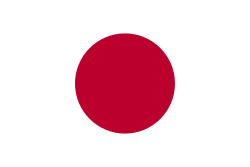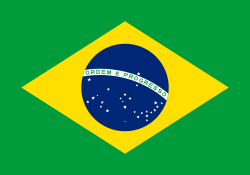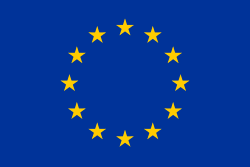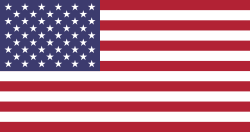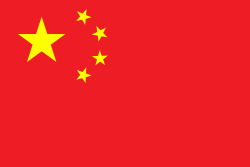Japans Grand Prix 2006
| Datum | 8 oktober 2006 |
|---|---|
| Bana | Suzuka Circuit |
| Sträcka | 53 × 5,807 - 0,198 = 307,573 km |
| Vinnare | Fernando Alonso, Renault |
| Pole position | Felipe Massa, Ferrari |
| Snabbaste varv | Fernando Alonso, Renault, 1:32,676 |
| Temperatur | luften 25°C, banan 28°C |
Japans Grand Prix 2006 var det sjuttonde av 18 lopp ingående i formel 1-VM 2006.
Rapport
Inför säsongens näst sista lopp hade Michael Schumacher i Ferrari och Fernando Alonso i Renault lika antal poäng och det var här som förarna skulle positionera sig inför det avslutande loppet i Brasilien 2006.
I första startledet stod Felipe Massa och Michael Schumacher i de två Ferraribilarna, i det andra stod Ralf Schumacher och Jarno Trulli i de två Toyotabilarna och i det tredje stod Fernando Alonso och Giancarlo Fisichella i sina Renaultbilar.
Massa, som hade pole position, tog ledningen i loppet men släppte under tredje varvet förbi tvåan och stallkamraten Michael Schumacher så att denne skulle kunna bygga upp en ledning samtidigt som Massa täckte upp eventuella attacker bakifrån. Alonso körde om Trulli direkt efter starten i Kurva 2 och jagade sedan i kapp Ralf Schumacher, som han och passerade. Alonso var därmed uppe på tredje plats. Under trettonde varvet gick Massa in i depå varvid Alonso då låg tvåa ca fem sekunder bakom Michael Schumacher.
Efter att både Fernando Alonso och Michael Schumacher gjort sina sista depåstopp var det fortfarande ungefär samma avstånd mellan de båda titelaspiranterna. När 17 varv återstod havererade Michael Schumachers motor, vilket gjorde att han var tvungen att bryta loppet. Alonso, som knappt trodde det var sant, övertog då första platsen och kunde sedan ganska enkelt vinna loppet och ta ledningen i VM-tabellen. Då ett lopp återstod och med 10 poäng tillgodo säkrade Alonso här med stor sannolikhet VM-titeln 2006.
Resultat
- Fernando Alonso, Renault, 10 poäng
- Felipe Massa, Ferrari, 8
- Giancarlo Fisichella, Renault, 6
- Jenson Button, Honda, 5
- Kimi Räikkönen, McLaren-Mercedes, 4
- Jarno Trulli, Toyota, 3
- Ralf Schumacher, Toyota, 2
- Nick Heidfeld, Sauber-BMW, 1
- Robert Kubica, Sauber-BMW
- Nico Rosberg, Williams-Cosworth
- Pedro de la Rosa, McLaren-Mercedes
- Rubens Barrichello, Honda
- Robert Doornbos, Red Bull-Ferrari
- Vitantonio Liuzzi, Toro Rosso-Cosworth
- Takuma Sato, Super Aguri-Honda
- Tiago Monteiro, MF1-Toyota
- Sakon Yamamoto, Super Aguri-Honda
- Scott Speed, Toro Rosso-Cosworth (varv 48, styrservo)
Förare som bröt loppet
- Mark Webber, Williams-Cosworth (varv 39, olycka)
- Michael Schumacher, Ferrari (36, motor)
- David Coulthard, Red Bull-Ferrari (35, växellåda)
- Christijan Albers, MF1-Toyota (20, mekaniskt)
Noteringar
- Ferrari hade inte brutit på grund av motorproblem sedan Rubens Barrichello gjorde det i Malaysia 2002.
VM-ställning
Förarmästerskapet
| Konstruktörsmästerskapet
|
| ||||||||
Media som används på denna webbplats
The Flag of Europe is the flag and emblem of the European Union (EU) and Council of Europe (CoE). It consists of a circle of 12 golden (yellow) stars on a blue background. It was created in 1955 by the CoE and adopted by the EU, then the European Communities, in the 1980s.
The CoE and EU are distinct in membership and nature. The CoE is a 47-member international organisation dealing with human rights and rule of law, while the EU is a quasi-federal union of 27 states focused on economic integration and political cooperation. Today, the flag is mostly associated with the latter.
It was the intention of the CoE that the flag should come to represent Europe as a whole, and since its adoption the membership of the CoE covers nearly the entire continent. This is why the EU adopted the same flag. The flag has been used to represent Europe in sporting events and as a pro-democracy banner outside the Union.